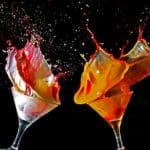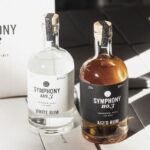Rum as a Muse: The Artists Who Found Inspiration in the Spirit
Rum, a storied spirit born of the Caribbean’s rich soils and centuries of history, has long served as a muse to artists, writers, and creatives alike. Its journey began with the early plantations of the 17th century, spreading through the sugar trade from the West Indies to Europe and the Americas.
What began as a byproduct of sugarcane quickly became a cultural symbol, and, for many, an artistic muse representing freedom, rebellion, and indulgence. This article explores how rum shaped the creative expressions of notable artists like Francisco Oller and writers like Ernest Hemingway, leaving an indelible mark on literature and art.
The Birth of Rum and Its Spread Across the Globe
Rum production began in the Caribbean when plantation owners discovered that molasses, the leftover residue from sugar refining, could be fermented and distilled into a potent spirit. The resulting drink was a crude version of rum, but it quickly gained popularity among sailors, plantation workers, and settlers across the Caribbean and beyond. By the mid-17th century, rum had become a staple in the British Navy and a currency in the American colonies, fueling trade networks and establishing itself as a commodity with social and economic importance.
As rum traveled from Barbados, Jamaica, and Puerto Rico, it found its way to the taverns of London, the ports of Boston, and the cafés of Havana. Each culture embraced the spirit uniquely, infusing it with its rituals, songs, and stories. For artists and writers, rum was more than just a drink—it became a symbol of the exotic, the unknown, and the unrestrained human spirit.
Francisco Oller: Capturing the Spirit of Puerto Rico
One of the earliest and most significant artists to immortalize rum culture was the Puerto Rican painter Francisco Oller (1833–1917). Born in San Juan, Oller was a realist and impressionist who studied art in Madrid and Paris. While he was heavily influenced by European masters like Gustave Courbet and Paul Cézanne, it was his return to Puerto Rico that shaped his unique vision. Oller is best known for his works that reflect Puerto Rican life, particularly its landscapes, people, and the burgeoning rum industry.
Rum in Oller’s Art
In paintings such as El Velorio and Hacienda La Fortuna, Oller’s use of vibrant colors and naturalistic settings depicted the everyday lives of rural Puerto Ricans, many of whom worked in the sugar and rum industries. His work Hacienda La Fortuna (available to view at Museo de Arte de Puerto Rico), in particular, is an evocative portrayal of a 19th-century rum distillery. The painting captures the towering windmills, verdant sugarcane fields, and the bustling activity of the plantation workers, who are seen harvesting and processing sugarcane—an essential step in rum production.
Oller’s art doesn’t just document the economic role of rum; it also reflects the social and cultural dimensions of the spirit. The distilleries were often the heart of the community, where music, labor, and celebration coexisted. Oller’s paintings suggest that rum was not merely a product but a symbol of the resilience and creativity of the Puerto Rican people.
Ernest Hemingway: Rum as a Literary Muse
If Oller used his brush to paint the Caribbean’s rum culture, Ernest Hemingway (1899–1961) used his pen to immortalize its flavor. Hemingway’s love affair with rum began in the 1930s when he moved to Key West and, later, to Havana, Cuba. The famous author of The Old Man and the Sea and For Whom the Bell Tolls was known for his larger-than-life persona and his penchant for drinking. Rum featured prominently in both his personal life and his literature, becoming a recurring motif that symbolized both adventure and melancholy.
Rum in Hemingway’s Havana
In Havana, Hemingway frequented two bars: La Bodeguita del Medio and El Floridita, both of which still serve the rum cocktails he made famous—the Mojito and the Daiquiri, respectively. Hemingway’s time in Cuba is vividly captured in works like To Have and Have Not, where alcohol flows freely, evoking the city’s vibrancy and decadence. His characters often drink as a means of escape or a ritual of camaraderie, using it to navigate the turbulent political and personal landscapes they inhabit.

Actually, the brand Papa’s Pilar launched the Ernest Rum, a meticulously crafted tribute to the artist. The special blend undergoes a double-finishing process: first, it rests in new, air-dried American oak barrels; then is refined in Cognac and Armagnac casks.
Rum as a Symbol of Artistic Rebellion
Beyond Oller and Hemingway, rum has inspired countless other artists, from Caribbean poets and musicians to contemporary visual artists. It has served as a symbol of rebellion and anti-establishment sentiment, often associated with pirates, mariners, and revolutionaries. For example, in Jamaica, rum is intertwined with the legacy of the Maroons—escaped enslaved people who fought for their freedom—and with the birth of reggae music, which regularly references the spirit in its lyrics as a symbol of resistance and liberation.
In Cuba, rum and rumba music evolved side-by-side, each shaping the other in a dynamic interplay of sound and sensation. Artists like Wifredo Lam, a Cuban painter known for his Afro-Cuban surrealist works. Lam frequently drew on the imagery of rum-making and sugarcane in his art, using it as a metaphor for the complex history of colonialism and cultural syncretism in the Caribbean.
For example, in La mañana verde (The Green Morning) as described by critics, the painting evokes what could be a Santeria ceremony or rite in the middle of a sugarcane plantation. (Get to know the full story here)
Rum in the Modern Muse
The connection between rum and creativity is not limited to the visual arts. Musicians, filmmakers, and even chefs continue to draw inspiration from the spirit. In the music industry, artists like Bob Marley have sung about rum as a symbol of Caribbean pride and defiance. Filmmakers have used rum-soaked settings to evoke the lush, chaotic energy of the tropics, while chefs use rum in gastronomy to bridge the gap between tradition and innovation.
In all these forms, rum serves as a muse, a lens through which artists explore themes of identity, freedom, and transformation. Whether in the hands of a master painter like Francisco Oller, a legendary writer like Hemingway, or a contemporary artist challenging colonial narratives, rum remains a potent symbol of the Caribbean experience—a spirit that distills the complexities of history into art.
Exploring Rum’s Legacy in Art
For those interested in exploring the artistic legacy of rum further, several museums and collections house works that reflect the spirit’s influence:
- Museo de Arte de Puerto Rico: Featuring Francisco Oller’s paintings, including Hacienda La Fortuna, which captures the essence of 19th-century rum production.
- Museo Nacional de Bellas Artes de La Habana: Home to works by Wifredo Lam and other Cuban artists who explored rum’s cultural impact.
- Ernest Hemingway Home and Museum: Showcasing Hemingway’s personal artifacts and his connections to Cuban rum culture.
These collections provide a deeper understanding of how rum has shaped the artistic expressions of various cultures. They make it clear that this humble spirit is far more than just a drink—it’s a muse that has inspired generations of creative minds.
In sum, from the rum distilleries of Puerto Rico to the cafes of Havana, rum’s influence on art and literature is as complex and layered as the drink itself. Its role as a muse speaks to its power to evoke emotion, provoke thought, and ultimately, to capture the spirit of the Caribbean in all its vibrant, contradictory beauty.
So, if you want to dive into the world of rum just as art does, sign up for our newsletter!





